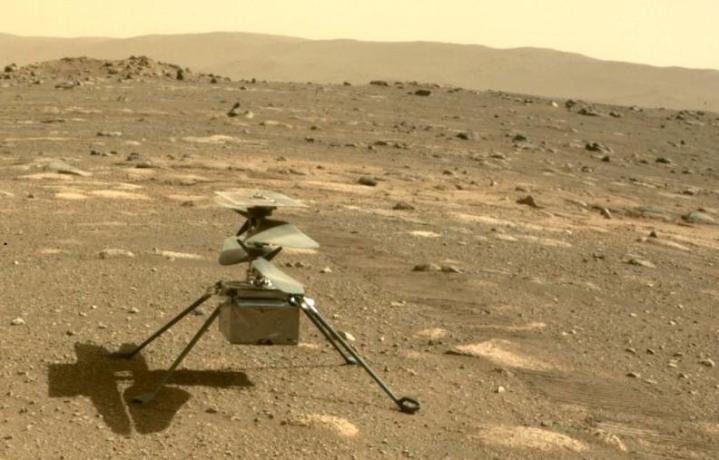One of the big challenges of Mars exploration is something very small: dust. Fine dust covers much of the martian surface, and high winds and low gravity mean the dust is easily whipped up off the surface, covering solar panels and gumming up components. The Ingenuity helicopter has had its own problems with dust on its solar panels, limiting the amount of power it could draw from the sun.
Now, researchers have used data from Ingenuity to understand more about how dust moves in the martian air, learning about the dynamics of dust, which could help future missions deal with this ongoing problem.

Researchers from the Stevens Institute of Technology, the Space Science Institute, and NASA’s Jet Propulsion Laboratory took data from Ingenuity’s flights to observe how dust moved around from the surface and into the air when the helicopter took off, hovered, maneuvered, and landed. Even a quick look at video footage shows just how much dust is stirred up by the helicopter, even though it is tiny and lightweight:
“There’s a reason that helicopter pilots on Earth prefer to land on helipads,” said one of the researchers, Jason Rabinovitch, in a statement. “When a helicopter lands in the desert, its downdraft can stir up enough dust to cause a zero-visibility ‘brownout’ — and Mars is effectively one big desert.”
The researchers also looked at footage of the helicopter that was captured by the Perseverance rover. This helped them model how much dust was kicked up, and measure both the mass and size of dust clouds.
“It was exciting to see [how] the Mastcam-Z video from Perseverance, which was taken for engineering reasons, ended up showing Ingenuity lifting so much dust from the surface that it opened a new line of research,” said another of the researchers, Mark Lemmon.
The results showed that each time Ingenuity flies, it kicks up around four pounds of dust — equivalent to around one thousandth of its own mass. This is much more than a helicopter on Earth would stir up, because there are so many different factors to consider on another planet.
“When you think about dust on Mars, you have to consider not just the lower gravity, but also the effects of air pressure, temperature, air density — there’s a lot we don’t yet fully understand,” Rabinovich said.
Understanding how dust moves on Mars is necessary not only for building robots that can survive the dusty environment, but also to help make landings safer as the amount of dust in the atmosphere can have an impact on how a spacecraft lands. This will be important for future Mars missions like the planned Mars Sample Return mission, and also any future crew missions to the red planet.
The research is published in the Journal of Geophysical Research: Planets.
Editors’ Recommendations
Credit: Source link



Comments are closed.